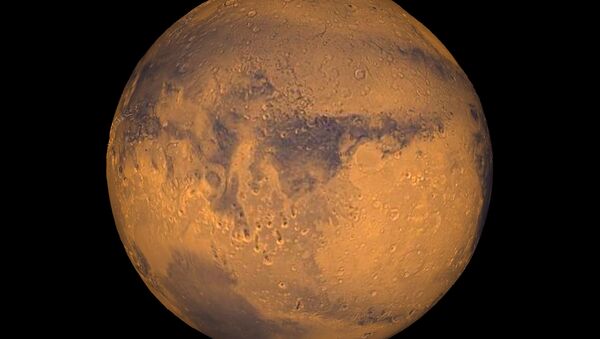Back in 1976, NASA's twin Viking landers touched down on Mars to find out if life could survive on Mars and whether there was organic matter in the Martian soil. Researchers were puzzled as no evidence for organic molecules were found, because they believed that organics had been delivered to the planet by carbon-rich meteorites.
"It was just completely unexpected and inconsistent with what we knew," Chris McKay of NASA's Ames Research Center told New Scientist.
Thirty years later, in 2008, NASA's Phoenix mission detected perchlorate on Mars. Perchlorate, a salt used on Earth to make fireworks, becomes highly explosive when heated. And while Mars's surface isn't too warm, the Viking spacecraft had to heat the soil samples to find organic molecules. Because perchlorate is in the soil, any organics in the samples would have been burned up during this process.
READ MORE: Mars to Pamper Gazers With Stunning Sight Amid NASA's Dust Storm Concerns
Although the discovery of perchlorate didn't provide proof that the Viking probe in fact contained Martian organics which were accidentally destroyed, it prompted scientists to make suggestions. "You get some new insight, and you realize that everything you thought was wrong," McKay said.
Scientists' suspicions that something went wrong in 1976 grew bigger when in 2014 NASA's Mars rover Curiosity found organic molecules and methane gas on the Red Planet.
Chris McKay, alongside several other researchers, has reexamined the Viking mission data to see if anything was missed. The team found that the Viking landers had also detected chlorobenzene, which the researchers said could have formed from burning organic material in the soil samples.
Opinions on the origin of the chlorobenzene have been divided in the research team, with some scientists claiming its molecules might have come from earth aboard NASA spacecraft.
However, the discovery of chlorobenzene in the Viking probe instills optimism among some scientists. "This paper really seals the deal," Daniel Glavin of NASA's Goddard Space Flight Center told New Scientist.


